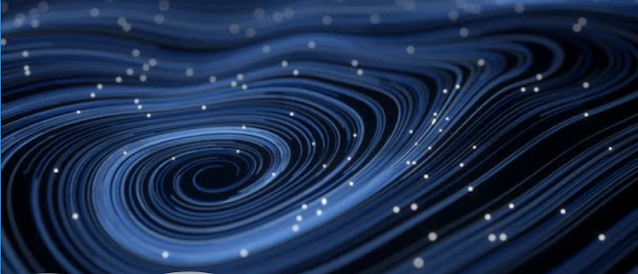Our universe is woven together by a massive network
of threads, made of a mysterious substance called dark matter, that creates a
largely hidden superstructure known as the cosmic web.
Now, scientists have produced the largest-ever maps
of these gargantuan filaments, covering about an eighth of the entire night sky
from Earth and encompassing more than 200 million galaxies that were observed
over 758 nights at NOIRLab's Cerro Tololo Inter-American Observatory in Chile.
These unprecedented views are the latest effort by
the Dark Energy Survey (DES) collaboration, an international team made up of
hundreds of scientists, which published its new findings on Thursday in a
mega-batch of 30 papers.
Among the many revelations from this data dump is a
huge map exposing thousands of empty voids in the cosmic web that may challenge
longstanding cosmological models, including aspects of Einstein’s theory of
general relativity.
The map charts out the distribution of dark matter,
an unidentified material that makes up more than a quarter of the universe, in
never-before-seen detail, making it “rich in information about the interaction
between galaxies, clusters, and the cosmic web,” according to a DES study
co-led by Niall Jeffrey, a cosmologist at École normale supérieure in France,
which appeared last week in the Monthly Notices of the Royal Astronomical
Society.
Jeffrey’s team generated the map, which is the
largest of its kind to date, using a trove of real observations that were then
analyzed by sophisticated algorithms that build on, and collate, many other
similar techniques.
“These results highlight expected differences in the
maps constructed using the different algorithms and illustrate the advantages
or disadvantages of their use in different science cases,” Jeffrey and his
colleagues said in the study. “We present a comprehensive framework under which
most of the convergence map-making methods described previously can be
connected and compared.”
The researchers were able to create this framework
thanks to a trippy method of cosmic cartography known as weak gravitational
lensing. Large objects in space, including clumps or filaments of dark matter,
produce gravitational fields that can distort the light emitted by galaxies, or
other radiant phenomena, situated behind them from our perspective on Earth.
This lensing effect provides a means to map out the
distribution of dark matter on huge scales, which would be otherwise
challenging given that this unidentified material does not produce detectable
light.
“Weak gravitational lensing is one of the primary
cosmological probes of recent galaxy surveys,” Jeffrey and his colleagues said
in the study. “By measuring the subtle distortions of galaxy shapes due to the
mass distribution between the observed galaxies and us the observers, we are
able to place tight constraints on the cosmological model describing the
Universe,” especially “the content of matter in the Universe” and “ the level
at which matter clusters,” they added.
To that point, the team detected 3,222 voids of
empty space between clusters and threads in its new DES maps. These large gaps
in the web can stretch across hundreds of millions of light years, yet contain
only a few galaxies, or sometimes none at all. They are interesting to
scientists for a host of reasons, including as laboratories to test out
Einstein’s theory of general relativity. For instance, some observations of
voids suggest that gravity appears to operate in a slightly different way
within these spaces, compared to predictions in the standard model of
cosmology, which is based in part on general relativity.
“Cosmic voids
are an increasingly favored cosmic probe and have now already been successfully
used to extract cosmological information,” according to the new study.
Though the
findings of the DES collaboration confirm the standard model of cosmology on
the whole, Jeffrey and his colleagues found that the voids they studied were
larger than those mapped out in previous surveys. The findings hint that the
cosmic web may be slightly smoother in its distribution, according to
observations, compared to the clumpier version predicted by models.
“It may seem
a relatively small thing, but if these hints are true then it may mean there’s
something wrong with Einstein’s theory of general relativity, one of the great
pillars of physics,” Jeffrey told the Guardian.
However, this is still just a whiff of possible
discord between theory and observation, and confirming any tensions between
them will require more surveys, models, and research in general.
Fortunately, the DES collaboration is already at
work analyzing its newest collection of observations, which will provide an
even more comprehensive look at the expansion of the universe and the cosmic
web that connects it.
